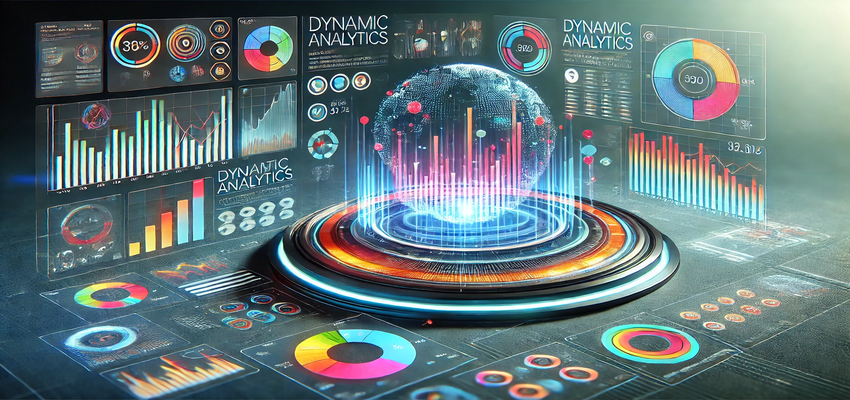
Master Microsoft Fabric with Our Comprehensive Training Program
Harness the power of unified data analytics with our Microsoft Fabric Training—your key to mastering data engineering, analytics, and governance in a single platform. Whether you're new to the field or an expert, this training will empower you to take full advantage of Microsoft Fabric’s capabilities.
Why Choose Our Microsoft Fabric Training?
- Hands-on Learning
Apply real data insights and develop end-to-end data solutions
- Expert-Led Sessions
Learn from professionals experienced with data platforms
- Comprehensive Curriculum
Dive into everything from data storage to advanced analytics
- Unified Data Management
Master the art of managing and visualizing data across platforms
- Collaborative Data Science
Build advanced models and share insights seamlessly
- Data Security & Governance
Ensure data privacy and compliance with industry standards
- Career Advancement
Enhance your data engineering skills and boost your career prospects
Microsoft Fabric Training Modules
Module 1: Introduction to Microsoft Fabric
- Overview of Microsoft Fabric
What is Microsoft Fabric?
Key features and components of Microsoft Fabric.
Comparing Microsoft Fabric with other data platforms like Azure Synapse, Power BI, etc.
Use cases and business applications of Microsoft Fabric.
- Architecture of Microsoft Fabric
Core components of Microsoft Fabric: Data Engineering, Data Science, Data Warehousing, Business Intelligence (Power BI), and Machine Learning.
Overview of Fabric's unified analytics experience.
Integration of data lakes, data warehouses, and operational data stores in Fabric.
- Getting Started with Microsoft Fabric
Signing up and setting up a Microsoft Fabric environment.
Navigating the Microsoft Fabric interface and workspace.
Understanding the roles and permissions in Microsoft Fabric.
Module 2: Data Engineering
- Data Lake House Concept
Introduction to Data Lake Houses in Microsoft Fabric.
Understanding Delta Lake format and its advantages.
- Data Ingestion and Preparation
Connecting to various data sources (SQL, CSV, Excel, REST APIs, etc.).
Ingesting structured and unstructured data into Fabric.
Data cleaning and transformation using Microsoft Fabric’s tools.
- Data Pipelines
Building data pipelines for data integration.
Scheduling and orchestrating data workflows.
Monitoring pipeline performance and handling errors.
- Data Storage
Understanding storage options within Microsoft Fabric.
Data partitioning and management best practices.
Optimizing storage and performance.
Module 3: Data Warehousing
- Overview of Data Warehousing
Introduction to data warehousing and its importance in business intelligence.
The architecture of a modern data warehouse in Microsoft Fabric.
- Creating and Managing Data Warehouses
Building and managing data warehouses in Microsoft Fabric
Data modeling for a data warehouse (star schema, snowflake schema).
Managing large datasets and performance optimization.
- ETL (Extract, Transform, Load) Process
Best practices for ETL within Microsoft Fabric.
Automating ETL pipelines.
Managing data flow from staging to final datasets.
Module 4: Data Science and Machine Learning
- Introduction to Data Science Workspaces
Setting up a data science workspace in Microsoft Fabric.
Managing and collaborating on data science projects.
- Building Machine Learning Models
Using Fabric’s integrated tools for building, training, and deploying machine learning models.
Pre-built AI capabilities in Microsoft Fabric (e.g., text analytics, image recognition).
End-to-end model lifecycle management (data preprocessing, training, evaluation).
- Model Deployment and Monitoring
Deploying machine learning models to production.
Monitoring model performance over time
Handling model drift and updates.
Module 5: Analytics and Business Intelligence (Power BI)
- Power BI Integration
How Power BI fits into the Microsoft Fabric ecosystem.
Connecting Power BI to data stored in Microsoft Fabric for reporting and analysis.
Creating and publishing Power BI reports from Fabric..
- Building Dashboards and Reportss
Designing and visualizing data using Power BI within Microsoft Fabric.
Creating interactive dashboards and visualizations.
Advanced Power BI features like Q&A, bookmarks, and drill-through.
- Data Governance and Security in Power BI
Implementing row-level security (RLS) in Power BI reports.
Managing access to data and reports.
Compliance and data privacy considerations.
Module 6: Real-Time Data Processing and Streaming
- Building Real-Time Pipelines
Ingesting and processing streaming data.
Using Apache Spark, Delta Lake, and other tools for real-time processing.
- Real-Time Dashboards and Alerts
Visualizing real-time data in Power BI dashboards.
Setting up real-time alerts based on data thresholds.
Module 7: Data Governance and Security
- Data Governance Overview
Importance of data governance in an enterprise environment.
Key concepts in data governance (metadata management, lineage, data quality).
- Data Security and Compliance
Managing security for data within Microsoft Fabric.
Role-based access control (RBAC).
Compliance with industry regulations (GDPR, CCPA, etc.)..
- Data Lineage and Auditing
Tracking data lineage in Fabric to understand data flow.
Auditing data access and transformations for compliance.
Module 8: Managing and Monitoring
- Managing Workspace
Creating and organizing workspaces within Microsoft Fabric.
Collaboration and sharing resources with teams.
- Monitoring Pipelines and Workloads
Setting up monitoring for data pipelines and workflows.
Performance tuning and troubleshooting issues.
- Cost Management and Optimization
Understanding pricing models and managing costs in Microsoft Fabric.
Optimizing resource usage for cost-effective operations.
Module 9: Advanced Features and Integrations
- Integration with Azure Services
How Microsoft Fabric integrates with other Azure services like Azure Synapse, Azure Machine Learning, and Azure Data Factory.
- Custom Analytics and Extensions
Using Python, R, and other scripting languages for custom analytics within Fabric.
Extending Microsoft Fabric with custom connectors and models.
- AI & Automation with Power Automate and Azure Logic Apps
Automating tasks in Microsoft Fabric using Power Automate.
Setting up workflows to automate business processes.
Module 10: Final Project and Use Case Implementation
- Nano Commerce ERP Project:
Apply all the concepts learned to solve a real-world business problem.
- Project Presentation:
Demonstrating data pipelines.
Demonstrating data reports.
Demonstrating ML models.






